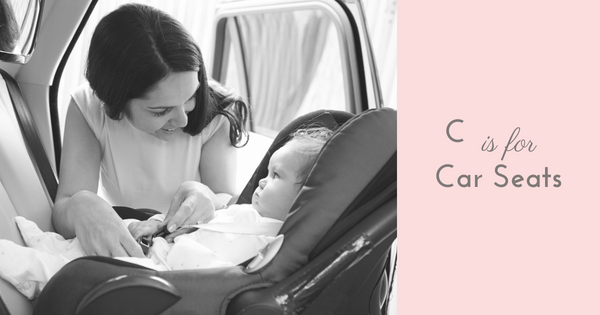 There are few things you will buy for your baby that will have more of an impact on their life than their car seat. A 2015 study by the Journal of Pediatrics found that only 5% of car seats are used with zero mistakes! The goal of this post is to give you a strong foundation in car seat safety and usage.
There are few things you will buy for your baby that will have more of an impact on their life than their car seat. A 2015 study by the Journal of Pediatrics found that only 5% of car seats are used with zero mistakes! The goal of this post is to give you a strong foundation in car seat safety and usage.
Have your car seats installed or checked by a CPST
A Child Passenger Safety Technician (CPST) undergoes an intensive three day training consisting of didactic and practical information. These professionals can help determine where and how to install your baby’s seat, and guide you through proper use. Many of our local police or fire departments have a CPST, or you can search here for a CPST in your area.
Always New, Never Used
Accidents can compromise the integrity of a car seat. You cannot verify for certain if a car seat has been in an accident. Therefore you should always buy your child’s car seat new from the store and replace after an accident. We recommend checking with the car seat manufacturer, not your insurance company, to determine if replacement is necessary.
The good news is you do not need to buy the most expensive car seat in the store. All seats must meet the same safety standards, so you can purchase one that is within your budget.
Car seats expire anywhere from 6-10 years after manufacture (see your Owners’ Manual for the specifics for your seat). Why do car seats expire? Manufacturers put an expiration on car seats because of improvements to safety standards as well as normal wear and tear over time. Once the seat has expired, you can either turn it in at a Trade-In event or cut the straps and discard it with bulk trash pick up.
Proper Use
It is imperative that you fully read the Owners’ Manual for the specifics of the seat you have purchased. However, the following points are rather universal:
- Secure all clips
- The chest clip should be at nipple level
- Tighten the straps so there is no slack
- Do not use any aftermarket products. This includes: seat protectors (for your car’s seat or to protect the car seat from diaper blow outs), seat covers that go between your child and the seat, or shoulder pads.
- Using these items have not been safety tested. Their use may void the warranty and/or release the manufacturer of any liability should your baby be injured in an accident.
- Do not attach any toys to the car seat. When driving these toys can become a projectile in an accident.
- Lower the handle of the infant bucket seat prior to driving.
Proper Attire
Your child should wear nothing thicker than a sweater as this prevents the straps from tightening fully. Bulky coats are a no-go. DID YOU KNOW that adults should also remove their winter coat/jacket prior to getting into a car?
Your child should not wear a hat, bow, or headband while in the car. These items can come off and become a strangulation hazard.
Rear Face
The current recommendation by the American Academy of Pediatrics is for children to remain rear facing until at least 2 years of age. Ideally your child should remain rear facing as long as the car seat permits based on their height and weight. In the event of a collision having your child rear facing prevents their head from violently moving forward. This “whip lash” type injury in a child can be fatal due to the immaturity of the muscles and ligaments in their spine and neck. Most car seats allow for a child up to 40 or 50 pounds to sit rear facing – just make sure there is at least one inch of the shell of the seat above your child’s head. In the event of a collision your child will slide up and this space will help protect their head and neck.
Young children have greater flexibility and range of motion and are not uncomfortable rear facing. Think about the unconventional positions older children sleep in. Some of those positions are enough to make most adults cringe. Something to remember is if your child is uncomfortable, they will not be able to fall asleep; this applies to being in a car seat, too.
Even a child who is “big” for their age” should be rear facing. Their joints, bones, and spinal ligaments aren’t any more developed than a smaller child of the same age. In fact, being “big” for their age is all the more reason to keep your child rear facing. Larger children have heavier heads that will pull forward with more force than a lighter child of the same age in the event of a collision.
For older children who get car sick, there has been little improvement shown with forward facing and a reduction in motion sickness. These children tend to do best when rear facing in the middle seat with an unobstructed view out the back of the car, provided it is safe to have your child’s seat in the middle seat of the vehicle you have.
Additional Readings
D is for Delayed Cord Clamping
E is for Epidural
F is for Formula
Resources
AAP Recommendations
Car Seats: Information for Families
This post is for informational purposes only. It is not intended to take the place of reading your car seat’s and vehicle’s Owners’ Manuals.


Comments 1
Pingback: A is for APGAR Score | ABC Blog Series